
Get to Know… Seals & Crofts
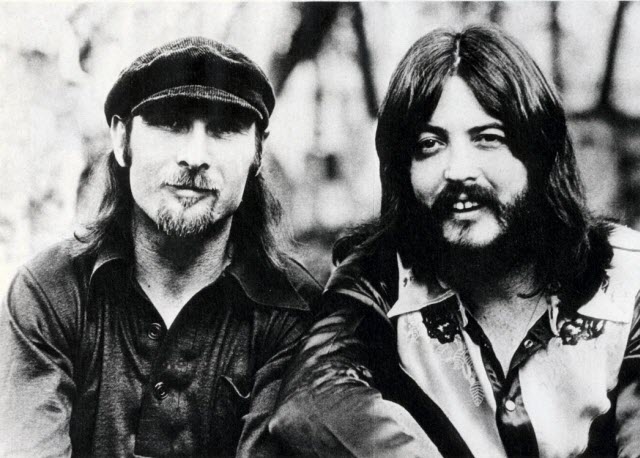
There was once a time when the term “soft rock” wasn’t used as a pejorative, but that was long before I started listening to music. These days it’s just lazy music critic/fan shorthand for “boring” or “bland.” Seals & Crofts often gets trotted out as one of the textbook examples of the bad kind of soft rock, and in all honesty it’s not entirely undeserved. But for a time in the 1970s, they were among the finest purveyors of pop music in America — regardless of label.
If any act from the era deserves to have their legacy re-evaluated, it’s the duo of Jim Seals and Dash Crofts. So that’s what this edition of “Get to Know…” will set out to do. I hope by the end you’ll agree with me that just because music is soft doesn’t mean it’s not good.
(Previous editions of this series covered Genesis, Vince Guaraldi, and David Lee Roth.)
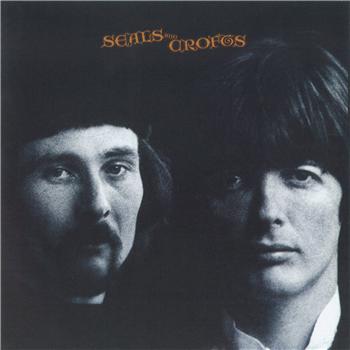
Seals and Crofts, 1969 (buy)
Seals & Crofts’ self-title debut sounds very much at home with contemporaries like Crosby, Stills & Nash and (a few years later) America. This set of “wandering troubadour music” features some punchy production, and their distinct duo of countrified mandolin and acoustic guitar.
The group reaches a little too far in places — the horn arrangements in “Sea of Consciousness” are a bit much, but the intertwining dual vocals are already beautifully formed. Some of the lyrics are too flowery for their own good, such as on “Earth” (“Give me a castle in the sun / where rainbows have ends and the people are one” ), but I suppose at least of this can be attributed to the duo’s burgeoning involvement in the Bahá’í Faith.
A few missteps aside (the album grinds to a halt with the gloopy “Birthday of My Thoughts”), this is a fine debut LP. The music is in turns propulsive and delicate, and there is no doubt that this duo has had years of experience leading up to the release. “In Tune” in particular zips along quite nicely.
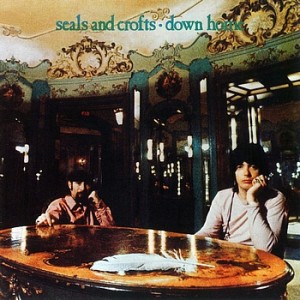
Down Home, 1970 (buy)
For their sophomore effort, Seals & Crofts threw a little grit into the mix. The result is an album that’s still highly melodic — and definitely still rooted in country and folk — but has a little more bite and harmonic complexity. Songs like “Purple Hand” and the haunting “Hollow Reed” feel a little more complete and fully-formed than similar ones on the duo’s debut.
The roots rock sound on portions of Down Home is at least partially attributable to producer John Simon, who produced the first two albums from The Band. Tracks such as “Tin Town” and “Leave” clearly bear the imprint of The Band, albeit in a more laid back way. Because hey, this is Seals & Crofts we’re talking about.
Although neither of the group’s first two albums lit up the charts, they were gaining some traction. They had earned enough of a following by now to attract the interest of Warner Bros. Records, which signed them in early 1971. With a growing fan base and backing from a major label, Seals & Crofts were poised for a commercial breakthrough.
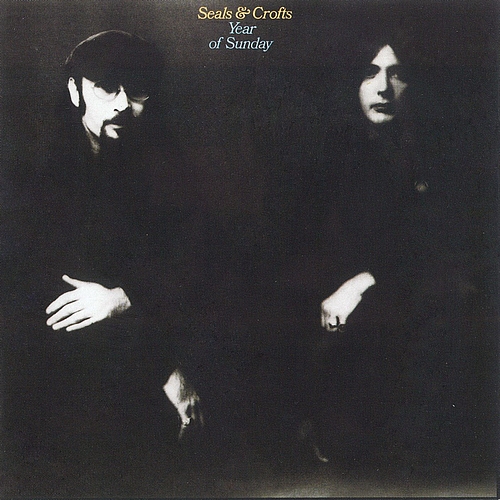
Year of Sunday, 1971 (buy)
Unfortunately, this wasn’t it.
For the group’s Warner debut, bassist and longtime collaborator Louie Shelton moved into the producer’s chair and the results are striking. The uptempo numbers are more vibrant — album opener “When I Meet Them” is fantastic — and the gentler songs still make enough of an impact to avoid floating away into nothing (“Antoinette”). The songwriting is also more consistent and nuanced, with none of the clumsiness that popped up on the first two releases.
Year of Sunday had the makings of a commercially successful album, minus one important thing — a great single. Oh the material is strong (even though the overtly religious and spiritual lyrics seem heavy-handed now), but there are no irresistible hooks or catchy choruses — although “Sudan Village” comes close. So it’s not entirely surprising that the record peaked at #133 on the Billboard album chart. Luckily this happened in the days when record companies didn’t bail on acts at the first sign of trouble.
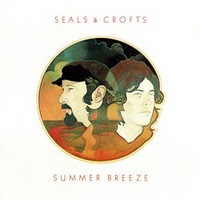
Summer Breeze, 1972 (buy)
And it’s a good thing Warner didn’t. Seals & Crofts earned a spot opening for Chicago in the summer of ’72, and the exposure they gained had at least something to do with the massive success of Summer Breeze (released that August). But more than that, they simply picked the perfect time to issue their best album.
There’s a reason why this was the first — and for a time the only — S&C studio album to be issued on CD. It’s the perfect marriage of the duo’s fully-developed artistic and spiritual sides with their new-found pop songwriting skills. The arrangements are tight and the performances are dead on, but the album never feels anything but organic and loose.
The gorgeous “Hummingbird” opens the album, and really is a perfect piece of songwriting in my estimation. The rest of the album explores familiar styles for the pair but has a laser focus that previous records lacked. The medieval-style balladry (“Funny Little Man” and “East of Ginger Trees”) is delivered with less of an affectation, while the more rock-oriented songs (“Say” and “Yellow Dirt”) show that this is not music for wimps.
And of course, not much needs to be said for the classic title track. It hit #6 in 1972, the highest chart position they would attain. The album spent 100 weeks on the album charts and went gold, and deservedly so.
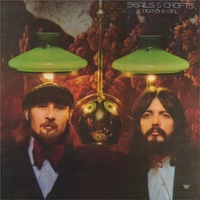
Diamond Girl, 1973 (buy)
The breakthrough of Summer Breeze set the stage for even more commercial success, and they Seals & Crofts disappoint. The jazz-influenced title track hit #6, duplicating the peak of “Summer Breeze.” Personally, I prefer the less-polished, more organic sound on Summer Breeze, but I can certainly understand why Diamond Girl hit it big.
Other than the sure-fire hit single “Diamond Girl,” “We May Never Pass This Way (Again)” is the other great song from the record and it barely missed cracking the Top 20.
Diamond Girl cemented the move toward a band-oriented approach, which Seals and Crofts would later come to lament. Although the duo was clearly still the focus of the music, they were now part of a much bigger machine.
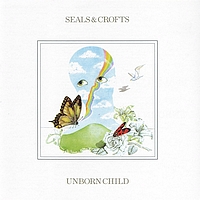
Unborn Child, 1974 (buy)
Most of the attention for Unborn Child was focused on the title track, a fiercely pro-life number written in the wake of the Roe v. Wade Supreme Court decision. And with lines like, “Oh unborn child / if you only knew just what your momma was plannin’ to do / You’re still a-clingin’ to the tree of life / but soon you’ll be cut off before you get ripe,” it’s hard to imagine how the band could not alienate some people. Not surprisingly, although the album reached #14 it didn’t sell as well as the previous few albums and yielded no hit singles.
Production-wise, Unborn Child is lush and a bit dense compared to its predecessors. The whole thing is nearly crushed beneath layers of orchestration in places, especially the front half. Of all the albums Seals & Crofts had released to date, this sounds the most firmly rooted in the stereotypical ’70s soft rock sound. Not that the group had a ton of crunch to begin with, but this is a little too polished.
Still, there are highlights. “Dance by the Light of the Moon” is a deftly composed pop/country tune with a little fire and some neat steel pedal guitar in the chorus, while “King of Nothing” — the second and last single from the album — and “Ledges” are breezy and catchy enough to overcome stuffy production. Album closer “Big Mac” is surprisingly energetic and sounds like it belongs on a different album.
The true gem of Unborn Child, for me at least, is “Follow Me,” a stunningly beautiful, melancholy, and clutter-free number that takes its place among the duo’s best material.
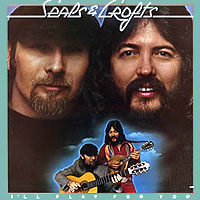
I’ll Play for You, 1975 (buy)
Perhaps as a reaction to the backlash against Unborn Child, the subject matter of I’ll Play for You is decidedly neutral. The title track, with benign lyrics like, “Hear the band, hear the band / Won’t you let the music take you, hear the band, did manage to hit #18 on the Billboard singles chart. It was the group’s highest showing since “Diamond Girl” in 1973.
Musically, I’ll Play for You is uniformly stronger than Unborn Child, even if the duo had started to take a more formulaic approach. “I’ll Play for You,” replete with a string section and some Dixieland jazz flourishes, features a strong main melody and excellent vocal harmonies. The slightly dour and sparse “Golden Rainbow” features some nimble guitar work, while the soaring choruses on “Castles in the Sand” help make it one of my all-time favorite S&C tunes.
Other tracks of note include “Blue Bonnet Nation” — a peppy, electric song that is surprisingly rocking — and “Freaks Fret,” a smooth instrumental workout that recalls the arrangement on “Funny Little Man” from the Summer Breeze album. Unfortunately there are some vanilla-flavored duds as well — “Ugly City” and “Truth About a Woman” could’ve been released by any number of contemporary soft rock acts of the day, which is to say that they’re competent but totally uninspired. The final song, “Fire and Vengeance,” sounds like it was stolen right out of Chicago’s mid-’70s songbook. I can’t decide if that’s a good thing.
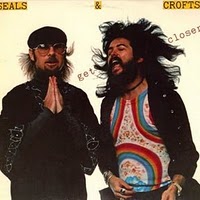
Get Closer, 1976 (buy)
It’s almost impossible for me to listen to the opening track on this record, “Sweet Green Fields,” without hearing Busta Rhymes’ 1998 hit “Put Your Hands Where My Eyes Could See.” The latter samples the memorable bass line from the former’s verses, and to great effect. As it stands, “Sweet Green Fields” is an excellent tune — a great mixture of sweetness and grit, and opens Get Closer in style.
Then there’s the title track, the duo’s last U.S. Top 10 single. It’s a beauty for sure, and some lovely background vocals by Honey Cone’s Carolyn Willis really sweeten the deal. It’s fully produced yet surprisingly uncluttered.
The remainder of Get Closer is a bit inconsistent. “Red Long Ago” features excellent vocal harmonies and a fairly epic arrangement — for Seals & Crofts that is — but there are too many pretty but ultimately inconsequential soft rock ditties like “Goodbye Old Buddies,” “Million Dollar Horse,” and “Baby Blue” to recommend this LP to anyone but fans. That said, the final song here — “Passing Thing” — is a real gem and effectively hearkens back to the best moments from Summer Breeze.
If you’re into soft rock then you can’t necessarily go wrong with this album – but even as a S&C apologist I recognize that there’s not a great deal aside from its three best songs to make it stand apart.
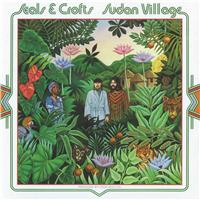
Sudan Village, 1976 (buy)
Live albums tend to fall into one of two categories: essential or inconsequential. Sudan Village, as it happens, sits somewhere in the middle. What it offers are much beefier, slicker takes on cuts from Year of Sunday and Summer Breeze on the one hand and seemingly out-of-left-field originals on the other. As for the older songs, “Sudan Village” opens the album and is the best of the bunch, with “East of Ginger Trees” a close second.
Then there are the new songs, or at least older songs that debuted on this record. “Baby I’ll Give It to You” features the return of Carolyn Willis on vocals and is so slick and mid-’70s contemporary you’d swear it was a Bee Gees B-side. Same goes for “Put Your Love in My Hands,” although it more closely resembles Chicago’s more commercial output.
The centerpiece of Sudan Village is the nine-and-a-half-minute instrumental jam “Thunderfoot,” which opens the second side of the LP. It’s a simmering, funky workout that is really quite good but feels utterly out of place on a Seals & Crofts album. It really sounds more like the kind of music bands like the Crusaders were pumping out around this time, not that there’s anything wrong with that.
The final two songs are the only ones that truly sound like they were performed in front of an audience, although I have a hard time telling the difference between them. Break out your overalls and moonshine, because it’s time for hoedowns and hootenannies — “Arkansas Traveller” and “Eighth of January”! Yee-haw! They’re certainly fun, albeit an odd way to end the album. I guess you had to be there.
Note: Seals & Crofts provided vocals for the soundtrack to the 1977 basketball drama One on One, but did not write any of the words or music. It’s got the trademark S&C vocal harmonies and it’s worth listening to, but for the purposes of this overview I’m not going into detail on it.
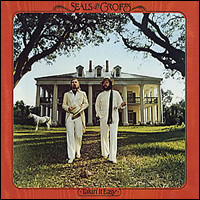
Takin’ It Easy, 1978 (buy)
This is the crucial departure point for Seals & Crofts, and I can totally tell that they were feeling burned out around this time. Very little of the duo’s original identity is intact on Takin’ It Easy. That’s not to say this is a bad album, it’s just not really a S&C album. The pair only wrote one song on the first half of the album (“Midnight Blue”), and it is the least memorable track on it.
The rest of Side A is a mish-mash of sounds. The title track sounds like an Eagles B-side from Hotel California, but it is pretty strong. “One More Time” starts off promisingly with some very lush, early ’70s-era Beach Boys vocals but then devolves into a sappy and dated pop track. The hit single from the record, “You’re the Love,” is a decent piece of disco pop co-written by longtime producer Louie Shelton.
Even on the songs the pair wrote themselves, I get a definite “going through the motions” vibe. It all sounds very professional and competent, mind you, and even I can’t resist tapping my foot to “Breaking In a Brand New Love,” but it just feels all wrong. I mean, they actually pulled the “Moon/June” rhyming card.
This is music that dozens of other bands were producing in the late ’70s, and it lacks any of the group’s unique style — save for the closing track, “A Tribute to Abdu’l-Bahá.” The fact that Takin’ It Easy peaked at #78 is really no surprise at all.
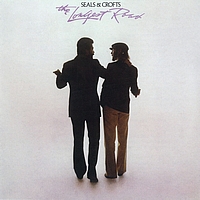
The Longest Road, 1980 (buy)
The first clue that something is amiss here is that Dash Crofts received zero writing credits on this album. Most of the songs were co-written by Jim Seals and Brian Whitcomb, who I know nothing about. In any case, the Seals & Crofts “identity” that I said was missing on Takin’ It Easy is just as MIA on The Longest Road.
The opening cut, “Stars,” is a late-period Steely Dan song for people who hate Steely Dan. It even features its own pair of crack jazz musicians, Chick Corea and Stanley Clarke.
I can’t say for certain that Crofts had checked out by the time this was recorded, but I’m going to assume so. His loss doesn’t result in bad music, just bland music that sounds hopelessly tied to the era. A line from “If and Any Day” puts it best — although even then it was written not by Seals or Crofts but by Michael Sembello and Marietta Waters — “Tell me how did I lose my way? / Isn’t there a door that leads to yesterday?”
The album didn’t chart at all, and the “First Love” single barely cracked the Top 40. If Takin’ It Easy hinted that the duo of Jim Seals and Dash Crofts might finally be a spent creative force, The Longest Road confirmed it. Warner Bros. dropped the pair from the label, and other than some subsequent appearances at Bahá’í gatherings, a brief reunion tour in the early ’90s, and a Dash Crofts 1998 solo record, they pretty much walked away from the music business altogether.
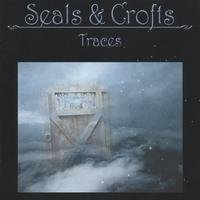
Traces, 2004 (buy)
So what to make of Traces, the first proper Seals & Crofts studio record in almost 25 years? Well firstly, there is very little in the way of new material here. Most of the record’s 10 tracks are re-recordings of old songs, with only three that had never appeared on a Seals & Crofts album before. Well on the plus side, the harmonies still sound sweet nearly a quarter century after the fact. And they don’t stray too far from the original arrangements, so there are no nasty surprises in store.
Of the two totally new songs, “Change the Copper Into Gold” is an effectively low-key number with a modern, synthesized bed, while the more upbeat and catchy “Paint You” wouldn’t sound out of place on a station specializing in modern adult contemporary. Neither is iconic in any way, but they’re not bad either.
It seems fairly likely at this point (June 2012) that Traces will be the final album from Seals & Crofts, and truth be told, that’s OK. It helps to wash out some of the bad taste from The Longest Road, and provides a little bit of musical closure. They even get their children involved, as Juliet Seals and Amelia Crofts handle some vocals. So all in all, not a bad way to cap off a mostly excellent career.
People found this post by searching for:
- "juliet seals and amelia crofts", "Poor little baby seals and crfts"
George L
Thank you for your reviews of these albums. I liked some of S&C’s radio songs but kind of wrote them off as bland pop music. I have been listening to some of their album tracks on YOUTUBE & am liking what I hear.